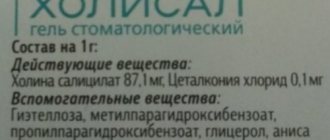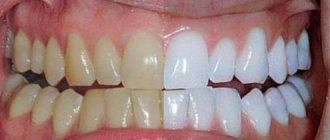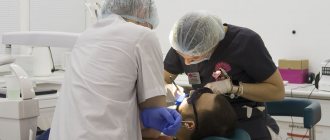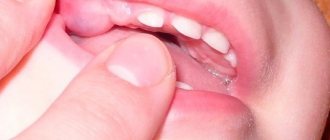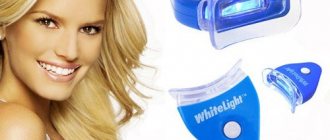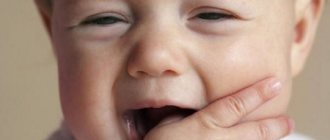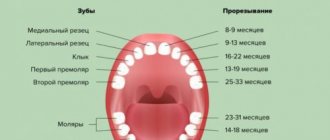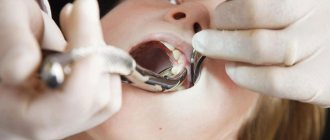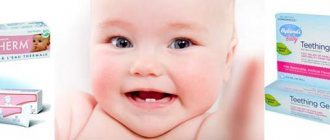Some children experience the period of teething baby teeth and their replacement with permanent molars painlessly and calmly, while others, on the contrary, are forced to feel excruciating pain. In the latter case, only special medications can alleviate the child’s condition, for example, pain-relieving gels during teething.
Special pain-relieving gels will help ease your baby’s condition during teething.
How does baby gel work?
Many dental gels during teething, due to the anesthetic they contain, do not penetrate the baby’s bloodstream and act only superficially. The anesthetic they contain helps to quickly relieve pain and alleviate the child’s condition. Also, there are gels without the inclusion of this substance, which provide an analgesic effect with other components (usually herbal). In addition, regardless of the main active ingredient, teething gels may contain other components that relieve inflammation and other symptoms in the child that are characteristic of the processes of formation and change of teeth.
Popular dental gels for teething
At the moment, gels for teeth and gums are presented by many companies. To make your choice easier, let's look at the most popular ones.
Dentinox
It is a transparent gel with a yellow tint and a distinct scent of mint and chamomile. Using Dentinox gel for preventive purposes allows you to achieve painless and normal formation of the first incisors, primary and subsequent molars. This drug also prevents inflammation of the oral mucosa (stomatitis), irritation of the gums and any painful sensations.
- Composition 1 g of the drug . Active ingredients - tincture based on chamomile flowers (150 mg), polidocanol 600 (3.2 mg), lidocaine hydrochloride (3.4 mg); excipients - xylitol, carbomer (974 P), sorbitol, propylene glycol, polysorbate 20, levomenthol, purified water, sodium edetate, saccharin and hydroxide.
- Side effects . The appearance of a slight burning sensation, redness and irritation. In some cases, allergies may develop, including contact allergic reactions, itching, skin rashes and angioedema. If any of the side effects occur, stop using the product and consult a doctor.
- Contraindications . Hypersensitivity to the substances of the drug, the presence of open wounds on the mucous membrane in the oral cavity. Due to the sorbitol content, Dentinox is not recommended for the treatment of children with congenital fructose hypersensitivity.
Cholisal-Gel
Compared to cooling gels based on lidocaine, Cholisal has a pathogenetic effect aimed at getting rid of the cause of pain in this process - swelling and inflammation.
After application to the surface of the gums, the active substance of the drug, choline salicylate, is absorbed by the mucous membrane and relieves local inflammation: compression and swelling of nearby tissues are reduced, due to which the pain effect disappears. The adhesive base of the gel ensures a rapid onset of the effect (after 2-3 minutes), as well as its long-term retention, which allows Cholisal to eliminate unpleasant sensations during teething in children for up to 8 hours in one application.
- Composition per 1 g of product . Cetalkonium chloride (100 mcg), choline salicylate (87.1 mcg); auxiliary components - anise seed oil (1.61 mg), methyl parahydroxybenzoate (1.5 mg), ethanol 96% (390 mg), hyaetellose (20 mg), glycerol (50 mg), propyl parahydroxybenzoate (0.8 mg), water (up to 1000 mg).
- Side effects . Allergy; A short-term burning sensation may occur in the area of application of the product, which can be eliminated independently.
- Contraindications . Hypersensitivity to salicylates, as well as other components of Cholisal. When treating a child under 1 year of age, caution should be exercised.
Kalgel
Designed to eliminate pain during teething in children aged 5 months and older. Calgelalidocaine, which is part of the product, helps block the excitability of the membranes of the most sensitive nerve endings, and cetylpyridinium chloride is responsible for suppressing harmful microorganisms.
- Compound . Cetylpyridinium chloride (10 mg), lidocaine hydrochloride (33 mg); auxiliary components - xylitol, sorbitol solution 70%, glycerin, PEG-40 castor oil, ethanol 96%, xylitol, hydroxyethylcellulose 5000, laureth-9, sodium saccharin, hydrogenated concentrate, macrogol 300, vegetable flavor, levomenthol, caramel E150, purified water .
- Side effects . Allergy, as well as local irritant effect with prolonged use.
- Contraindications . The presence of hypersensitivity to the main and auxiliary substances of the drug, liver or kidney failure, bradycardia, heart failure of the II or III degree, arterial hypotension, intraventricular conduction disturbance.
Pansoral “First teeth”
The most popular herbal gels to ease teething without anesthetics. At the same time, the plant extracts included in the composition have a softening and soothing effect on the gum mucosa.
- Compound . Extracts of marshmallow root (49.75 mg), saffron flowers (1 mg) and Roman chamomile (49.75 mg); excipients: sodium methylparaben, glycerol, sodium propylparaben, purified water, sodium saccharin, carbomer, sodium benzoate, Irish moss and triethanolamine.
- Side effects. Not identified.
- Contraindications . Newborns up to 4 months, hypersensitivity to the components of the drug.
Kamistad
Refers to the number of dental gels for small children, used at 3 months and later. Kamistad has a quick pain-relieving effect and allows you to temporarily normalize the child’s general well-being. Due to the high content of lidocaine, treatment of children under 12 years of age should be carried out only as prescribed by a pediatrician.
- Compound . Active ingredients: tincture of chamomile flowers (protects against inflammation), lidocaine hydrochloride (anesthetic for pain relief); excipients: purified water, sodium saccharin dihydrate, benzalkonium chloride, trometamol, carbomers.
- Side effects . If you follow the recommended dosage of the gel, there are no side effects. In rare cases, a burning sensation may occur in the area where the gel is applied, as well as transient hyperemia.
- Contraindications . Hypersensitivity. Not recommended for treating infants under 3 months.
Dentol
Indicated for quick relief of pain in children from 4 months during teething. After application, Dentol begins to act after 1 minute and provides an analgesic effect for 20 minutes.
- Gel composition .7.5%: per 1 g: benzocaine (75 mg); excipients - sodium saccharin, polyethylene glycol 8 and 75, glycerin, red dye, cherry flavor, ascorbic acid, purified water.
- Side effects . If the dosage is observed, no negative effects have been identified. There is a possibility of side effects due to individual intolerance. If swelling, itching, or hyperemia occurs in the area where the drug is applied, its further use should be discontinued.
- Contraindications . The presence of infection or multiple wounds at the site of application of the gel. Hypersensitivity to benzocaine.
Baby Doctor "First Teeth"
The product has a pinkish tint and is odorless and tasteless. Instantly eliminates inflammation and soothes gums. Regular use can significantly facilitate the process of teething without any complications, making it recommended for infants and older children.
- Compound . Calendula (5.8%), chamomile (5%), water (70%), echinacea (5%), methylparaben (0.2%), marshmallow root (5%), plantain (5%), methylcellulose (4 %).
- Side effects . When using the drug in recommended doses and according to indications, there are no side effects.
- Contraindications . Hypersensitivity to herbal components of the medicinal product.
Kamistad Baby
Manufacturer: German pharmaceutical company STADA Arzneimittel AG . Available in tubes of 10 g . Shelf life : 2.5 years . Minty taste and smell with notes of chamomile and honey. Transparent gel with a yellowish-brown tint. According to the instructions, it is used for pain and discomfort from teething in children from 3 months.
Includes:
- Polidocanol.
- Chamomile extract.
- Excipients, including glycerin, flavorings, sweeteners.
Polidocanol is a weak anesthetic . Has a cooling and distracting effect. Chamomile extract helps reduce inflammation and swelling of the gums and oral mucosa.
Directions for use: a pea-sized amount of product is lightly rubbed into the painful area of the gum. Pain relief occurs within a few minutes. The only contraindications are individual intolerance. No side effects
Which gel is better to choose
To determine which teething gels help best, first of all, you need to familiarize yourself with their composition. Thus, the effectiveness of drugs containing lidocaine and other anesthetics directly depends on the amount of these components in them - the higher it is, the faster the pain relief effect occurs. And although pain relief occurs almost instantly, its return occurs just as quickly - usually 20 minutes after applying the gel. Anesthetic-based products include: Dentol, Kamistad, Kalgel and Dentinox.
Another type of no less effective gels for teething are preparations based on completely natural or semi-synthetic components. For example, these include: Cholisal, Baby Doctor and Pansoral. Compared to anesthetic-based gels, these products may have a less pronounced but longer-lasting analgesic effect, which is the result of not just blocking pain with plant substances, but eliminating the cause of its development - inflammation of the gum mucosa.
In general, all of the listed dental gels for newborns or teething children, in addition to their own advantages, have a common drawback - the risk of developing allergies. Therefore, when choosing a gel for teething, you should focus both on the allergic status of the baby and on the previously announced features of the action of each of the groups of drugs.
Thus, gels with an anesthetic will be more effective in a situation where a child has severe pain, which cannot be relieved by natural ingredients. And gels for infants based on plant substances are best suited for moderate deterioration in health, when natural pain relief by reducing inflammation will be sufficient.
Similarities and differences between the two drugs
At first glance, it may seem that Kalgel and Kamistad Baby are the same product under different brands. They have a number of similar characteristics:
- Same appearance and packaging.
- They are used in the same cases.
- Same mechanism of action.
- Same method of application.
Nevertheless, there are still differences. First of all, you should pay attention to the following parameters.
Compound
There is an opinion that polidocanol is a derivative of lidocaine. This is wrong. Polidocanol has a weak anesthetic effect , but it has nothing to do with lidocaine. It acts only on surface receptors, without involving the nerve channel. Therefore, the drug does not have a pronounced effect. Kamistad Baby is recommended to be used at night. While the medicine is working, the child will have time to fall asleep.
In addition to pain relief, thanks to the anti-inflammatory effect of chamomile extract, Kamistad Baby is prescribed for inflammatory processes in the oral cavity in children .
Lidocaine, which is part of Kalgel, affects the entire depth of the nerve canal. Therefore, the effect of Kalgel is stronger and longer than Kamistad Baby. Cetylpyridinium chloride has a disinfecting effect . But long-term use of this substance is not advisable, as it can disrupt the normal microflora of the mouth and cause stomatitis.
Despite its weak effect, polidocanol remains on the oral mucosa longer . Thus, Kalgel acts stronger, and Kamistad Baby lasts longer. Both remedies do not solve the problem as a whole; they provide only symptomatic treatment.
Overdose
Often, when trying to apply the gel, mothers are faced with the fact that the child licks the gel off his finger . In these cases, a drug overdose may occur. Kamistad Baby consists of 50% natural products ; during the observation period, no cases of complications due to overdose were identified.
Kalgel is 100% chemical substances . Kalgel contains lidocaine, which is a strong allergen.
An overdose of this drug can cause respiratory depression in a child . In addition, lidocaine has an effect on the heart muscle and reduces the heart rate. In 2014, US medical services strongly recommended the abandonment of lidocaine gels due to increased complications in infants. Therefore, when using Kalgel you need to be careful not to exceed the permitted dosage.
Child's age
The instructions for Kamistad Baby indicate that the product can be used in children from 3 months . In practice, the medicine is successfully used from the birth of a child.
Kalgel is used no earlier than 5 months . This is due to the increased allergenicity of the drug. In addition, the product has a number of contraindications.
Instructions for use
Although different gels have individual application characteristics (permissible frequency of application, number of repeated applications), they are all used for the same purpose, in the same way. A small amount of gel is distributed over the surface of the gums, from which the child’s new teeth are erupting.
As you can see, this procedure is very simple, but even so, recommendations for the use of a particular gel for various symptoms should be taken into account. For example, using an anesthetic gel during teething, if there is no fever, is not always necessary, but this is necessary in the case when, in addition to fever, other symptoms, especially pain, are pronounced.
And remember, only your pediatrician can correctly prescribe a teething gel!
Kalgel
Produced in Poland by GlaxoSmithKline Pharmaceuticals. Release form, also in tubes of 10 grams. Yellowish-brown color, menthol smell. Used for teething in children from five months.
Contains:
- Lidocaine.
- Cetylpyridinium chloride.
- Excipients, sorbitol, alcohol, sweeteners.
Lidocaine has a local anesthetic effect . Cetylpyridinium chloride is an antiseptic and prevents the proliferation of bacteria and fungi in the oral cavity.
Method of use: the drug in an amount of 5-7 mm is lightly rubbed into the inflamed gum. It begins to act within a few minutes. Repeated application no earlier than 20 minutes, no more than 6 times a day.
There are contraindications:
- Hypersensitivity to components.
- Severe diseases of the kidneys, liver, heart.
- Low pressure.
- Bradycardia.
May cause allergic reactions . If signs of an allergy appear, you should consult a doctor immediately.
